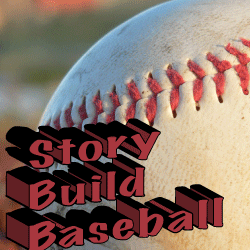 What is build?
What is build?
- The progressive rise of stakes and action in a story.
- An increasing investment by the reader–and the characters.
A story starts when (or just before) something happens that challenges the status quo, that throws everything off balance.
And then what happens?
The character attempts to address the problem, in the way that requires the least effort possible. This is human nature. Over reaction reflects on the state of mind of the character rather than on the initial circumstances. Matt Bird, a screen writer, talks about a major problem writers encounter in constructing thrillers: why don’t the folks in trouble call the police? Writers have to figure this out in order to write an effective thriller, because when people are in the kind of trouble that crops up at the beginning of a thriller, calling the police is the usual, and easiest, reaction. And yet the action builds because the characters are forced to deal with it directly, rather than pass it off to the police.
Literary fiction has to build, too. Otherwise, the story meanders and the reader tends to wander off. This has happened to me when I read a book that does not build. It happens in life, too. If you have a friend who always has a dramatic story about something that happened to her , but the level of complication is always about the same and neither gets worse or resolves, you start to feel that the friend is crazy or perpetuating the problem herself. It starts to bore, really. A friend once advised me, “Every ten years, get new problems.” In narrative, this has to happen much more frequently. The problems have to get more intense, more difficult.
And in order to keep the characters engaged–so that they don’t “call the police” or, in other words, find a way to walk away–their stakes (what they stand to gain or lose) have to rise, too.
At last, resolution–defeat or victory–is all that is left. The stakes and situation have built to the point where rolling along to the next day, the next problem, is not an option.
In order to illustrate this and to help you map it out for your own story, I’ve created “Story Build Baseball.” Come check out the questions that correspond to At Bat, First Base, Second Base, Third Base and Home!
Try this:
Story Build Baseball
At Bat: What is your character’s main problem at the start of your story?
First Base: What is your character’s main problem after the inciting incident?
Second Base: How does your character’s main problem become more urgent and significant during the course of your story?
Third Base: What finally forces your character to resolve or abandon the main problem?
Home: How has the main problem changed now that your character has made it all the way back to home?

I submitted to The Dana Awards last week and that really motivated me! I left Q as the beginning piece, which seemed to work in the moment, but completely changed the place where Merrie’s story begins. I’ve been inspired by TV and movies lately, how the shows I like don’t mess around longer than one or two minutes with someone’s depression, etc, they just jump in! So this week I’m thinking about ways to BOLDLY go where I’ve been too afraid/silly/bogged down in minutae/or simply unaware of alternatives to do it before.
I’ve got major revisions on my screenplay to work out, a submission deadline on Saturday for workshop and a sick kid at home. Yet, all is well and I couldn’t be happier to be a writer.
Write on.
Thanks for the great writing tool. What little I know of baseball at least includes running the bases. This gives me a framework to put have my characters struggle through.
Well, thanks to a lot of encouragement to Jeff, I have made it to home plate. However, Jeff tells me I forgot to tag third base (actually he questions the mechanism by which the protagonist conquers the antagonist as ‘cheap’ and not worthy of a story ending. I take his criticism seriously, so I’m trying to come up with a better solution to winning.
On a larger field of play, he criticizes the protagonist’s arc at the very end as being dark and in contrast with the character I have built. So I’m spending a little time thinking how to tweek the end so that he comes across as a ‘good guy’ in the end.
Thank you for this article and guide. I am working on a novel about two sisters who are both the main characters. I write from both povs. Will this still work?
Sabrina, Absolutely. I would write out the steps (or bases) for each of the POV characters and then look at them side by side. Where do they intersect? Some might even be the same event for both sisters. And of course, as with any structure, bend it to make it work for you.
As a lover of both writing and baseball, I find this a marvelous approach. Thank you Elizabeth!